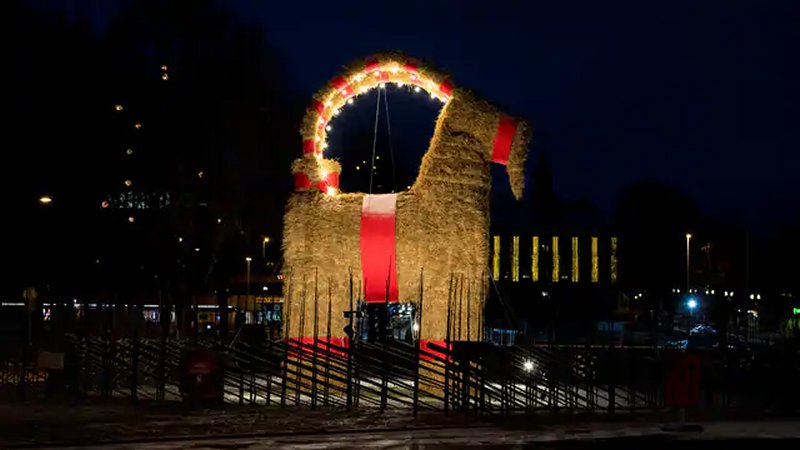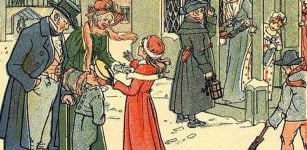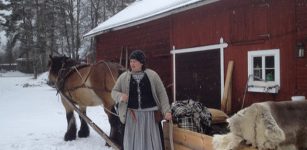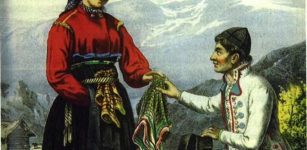The Magnificent Yule Goat In Gävle, Sweden Has Finally Arrived
Ellen Lloyd – MessageToEagle.com – It’s been a hard and sad year for many, but it doesn’t mean we should break with old traditions, and nothing can stop the Yule Goat that has finally arrived!
If you ever visit Sweden during Christmas and go to the city of Gävle where you can see a huge goat made of straw standing at Slottstorget (Castle Square). It’s an extraordinary and unforgettable sight.
The Yule Goat in Gävle this year, 2020. Credit: Credit: Mats Åstrand, TT Nyhetsbyrån
The Gävlebocken ( Gävle Goat) is 13 meters (42.6 feet) high, seven meters long, and weighs 3.6 tonnes. It takes a whole truck full of straw from the local village of Mackmyra to create the goat. 1,600 meters of rope is used.
The giant goat is erected every year at the beginning of Advent over a period of two days. It’s an annual Christmas tradition based on Norse legends and worship of Thunder God Thor.
History of the Yule Goat goes back several thousands of years and there are many ancient myths and legends that show how important this animal was to our ancestors.
In some Norse myths, God Thor was said to riding a flying chariot drawn by two goats.
It was believed that the goats Tanngrisnir (“Gap-tooth”) and Tanngnjóstr (“Tooth-grinder”), who pulled Thor’s chariot, provided food for the god and his friends.
God Thor and his two goats. Artist unknown
People in Scandinavia were not the only ones to understand the value of the Yule Goat. From Slavic mythology, we learn that Sun God Dazbog was represented by a white goat. Koliada (Yule) ancient pre-Christian Slavic winter festival that was later incorporated into Christmas started to honor the God of the fertile Sun and the harvest. The Koliada festivals always had a person dressed as a goat, often demanding offerings in the form of presents.
This year has been different in so many ways. Usually, many people come to see the Yule Goat in Gävle, but due to the pandemic, the public was asked to follow the ceremony digitally.
According to Rebecca Steiner, spokesperson for the Gävlebocken organized very few people showed up when the goat was put in place. Guards were standing around the goat, prepared to disperse crowds, but there was no need to. Most people understood one should not gather in large groups, and Steiner hopes curious visitors will continue to keep a proper distance to Gävlebocken as long as it stands there.
“This year is special. We do not want to encourage people to travel here in any way or flock around the goat,” she says.
We hope this year’s Yule Goat will survive without being damaged. Credit: Expressen
Hopefully, the huge straw goat will now remain unharmed until it is dismantled after New Year. On previous occasions, the Yule Goat has been vandalized, but in recent years it has been under constant surveillance. Fortunately, the last three Christmas and New Year weekends, the goat has survived unscathed, which is a record. Probably due to the fact that security has been tightened. The Christmas goat is now monitored around the clock with guards and cameras, as well as double fences.
The concept to build a huge Yule Goat comes from advertiser Stig Gavlén and his brother Jörgen who in 1966 came up with the idea of a large straw buck to stimulate trade.
Ironically, the Yule Goat in Gävle has become world-famous not because of its appearance, but rather the fact it has been vandalized so many times. It has been burnt down at least 29 times and attacked in other ways too, but with tightened security, we can now hopefully enjoy its presence until New Year.
You can learn more about the history of the Yule Goat here.
Written by Ellen Lloyd – MessageToEagle.com – AncientPages.com













